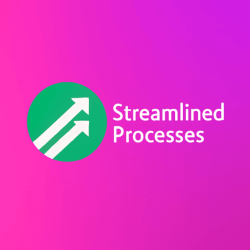For Software Subscription Management, see our main page here.
Why Software Subscription Management Matters Today
Software Subscription Management isn’t just a tech concern—it’s a business-critical function. As subscription-based platforms dominate the market, many organizations are seeing costs spiral out of control. From overlooked renewals to unused licenses, the risks are real. Therefore, managing licenses strategically has become essential to avoid wasted spend and maintain compliance.
In industries like healthcare and finance, where data privacy and security regulations are strict, Software Subscription Management helps teams stay audit-ready. Likewise, startups and SMBs use these tools to stretch limited budgets while maintaining access to necessary software. Above all, smart subscription management supports long-term digital transformation.
The Rise of Subscription-Based Software Models
Over the last decade, the shift from perpetual licensing to Software-as-a-Service (SaaS) has changed how companies access and pay for software. Instead of paying once, firms now pay monthly or annually—and often for each individual user. This flexibility has advantages, such as easier scaling or reducing upfront costs.
However, there’s a catch. Without structure, these recurring fees add up. A 2023 Gartner report found that companies lose up to 30% of their software budget to unnecessary or duplicate subscriptions. Therefore, Software Subscription Management helps reign in that cost while still allowing teams to benefit from SaaS agility.
Core Features of Effective Software Subscription Management Tools
A well-designed platform for Software Subscription Management offers more than just tracking—it empowers action. Here are the features that separate basic tools from best-in-class solutions:
- License tracking: See who uses what, how often, and when it renews.
- Automated alerts: Get notified before renewals or expirations to avoid last-minute surprises.
- Usage analytics: Understand software adoption rates to right-size your subscriptions.
- Contract storage: Keep vendor agreements, pricing, and contact details in one place.
- Cost forecasts: Predict future spending based on historical trends and current licenses.
These capabilities minimize errors, save time, and promote better decision-making. For example, one university deployed Software Subscription Management across 45 departments and reduced annual software costs by 22% through better license utilization.
How to Choose the Right Software Management Platform
With dozens of options on the market, picking a Software Subscription Management tool can be overwhelming. Start by defining your needs. Are you managing a few licenses—or hundreds? Do you require support for international currencies or compliance trails?
Here are key questions to ask before selecting a platform:
- Does it integrate with your finance or procurement systems?
- Can it track usage at both the user and department level?
- Does it provide customizable alert settings?
- Is reporting flexible and exportable?
- What type of onboarding or support is included?
For instance, a growing tech startup may prefer flexible APIs and integrations, while a government agency might prioritize compliance features.
Mistakes to Avoid in Subscription Management
Software Subscription Management becomes a liability when approached reactively. Many companies fall into common traps:
- Ignoring renewal dates: Leads to automatic renewals for software no one uses.
- Overbuying licenses: Based on last year’s staffing, not current needs.
- Siloed management: When each team manages their own software, overlap is guaranteed.
- Lack of contract awareness: Making it hard to negotiate terms or cancel services efficiently.
These issues are often easy to overlook, but they create significant drain over time. Consequently, establishing internal ownership—whether that’s IT, procurement, or finance—is an important step toward success.
Real-World Example: A Multi-National Corporation’s Strategy
One well-known logistics company operating in over 20 countries adopted Software Subscription Management after years of unchecked spending. By centralizing license oversight and aligning it with procurement, they streamlined over 300 individual contracts into strategic vendor relationships.
This allowed them to not only reduce costs but also negotiate multi-region licensing terms. In short, they turned a chaotic process into an enterprise advantage. This case highlights how intentional subscription oversight can produce measurable results within months.
Best Practices to Maximize Value from Your Software Stack
To make the most of your tools, follow these actionable tips:
- Audit regularly: Schedule quarterly reviews to identify unused or redundant software.
- Align subscriptions to roles: Match software access to job function—not user preference.
- Negotiate renewals: Initiate conversations with vendors 60–90 days before annual renewal dates.
- Use tiered access: Not every user needs a premium license; often, lower tiers suffice.
- Educate staff: Ensure departments understand the cost impact of software requests.
Following these routines can help reduce tech sprawl and improve ROI across your entire SaaS environment.
FAQ: Software Subscription Management Answered
What industries benefit most from Software Subscription Management?
Any industry that uses multiple SaaS or licensed tools—especially healthcare, finance, and education—can benefit. These sectors often deal with regulatory constraints and budget accountability, making cost control vital.
How often should we audit our software subscriptions?
Quarterly audits are ideal. However, mid-tier firms may perform semi-annual reviews depending on complexity and risk exposure.
Can Software Subscription Management reduce shadow IT?
Absolutely. By centralizing visibility into software use, IT teams can identify unsanctioned tools and consolidate functions where needed.
Is it worth investing in a dedicated platform, or can spreadsheets work?
Spreadsheets work temporarily for small teams. That said, they lack real-time visibility, automation, and scalability. Growing businesses almost always outgrow manual tracking.
The Role of Automation and AI in Subscription Management
AI and automation tools now play a transformative role in Software Subscription Management. They can analyze license usage trends, forecast budget impacts, and even recommend reductions based on real data. Machine learning algorithms can flag underused apps or missed savings opportunities—and over time, improve accuracy.
Moreover, automated workflows handle low-value tasks like renewal reminders, ticket routing, or cost center assignments. This frees your team to focus on strategy and outcomes, not checklists.
This article was created with the assistance of AI tools and reviewed by our team at Streamlined Processes LLC to ensure accuracy and relevance.
Follow us on Facebook here.

